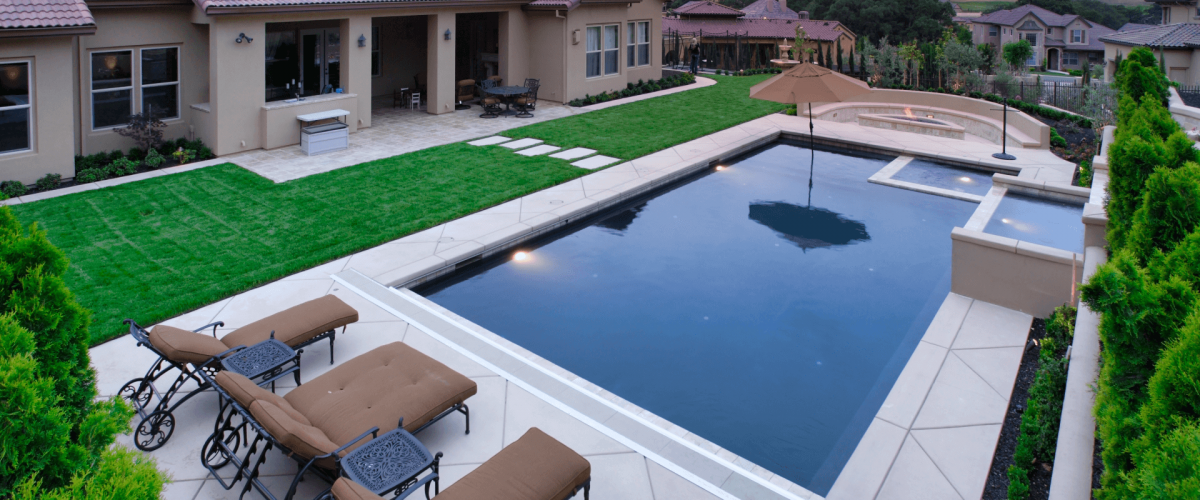Artificial turf should be installed on a layer of gravel or class-2 road base rock that is compacted to a solid surface. It can also be installed directly on soil, but it won’t look like a lawn because it will develop bumps and depressions as the soil moves.
Wet the area to allow the base material to set.
Preparation
Artificial turf installation is a large project that requires proper preparation. The area needs to be clear of rocks, weeds and anything else that may interfere with the settling of the turf. Also, the soil must be able to manage rainwater drainage. If water pools on the turf, it can lead to a number of issues, including damage to the lawn.
Native soil is typically composed of clay, which expands and contracts as the weather changes. This creates uneven surfaces, which can affect the appearance of your artificial lawn. To avoid this, a layer of decomposed granite or another type of base is added to the soil before installing the artificial turf.
The next step in preparing the ground for synthetic turf is to level it. You want to make sure the surface is flat so that it is aesthetically pleasing once the turf is installed. This also helps to prevent uneven wear. You can use a shovel or a power tamper to achieve this.
Once the ground is level, you should check for underground utilities. These include gas, water and electrical lines. Make sure to call DigAlert before digging in the yard so you don’t damage them. You should also remove any sprinklers or caps that are no longer needed.
The last step in preparing the ground for artificial turf is to add a weed barrier. This makes it a lot harder for weeds to grow through the base and reach the soil underneath, which they need to germinate. A glyphosphate-based total weed killer is ideal for this.
Installation
Installing artificial turf on concrete is a major project that requires planning, preparation and the right equipment. It involves digging, laying base materials and driving nails into the ground. It is best left to a professional, as it can be challenging for DIYers. The process includes removing existing grass and roots, importing gravel for the base, grading the ground to a 2-3% slope, installing air drain tiles or PDS tiles and using appropriate infills such as silica sand, crumb rubber or acrylic coated sand.
It is recommended to spray the area with a weed killer to reduce the amount of weeds that will grow under your new artificial lawn. It is also a good idea to put down a geotextile weed mat to prevent the spread of weeds between your new turf and your existing garden areas.
It is important to ensure that all turf is installed with the blades pointing in the same direction. Failure to do this will result in the fake grass looking less natural. The edges of the artificial turf should be fixed with seam tape & adhesive (PST Lawns self-adhesive seam tape is ideal) to ensure that they will not move during the installation. It is also important to stagger the end seams. This will help with a more natural look and prevent dirt, debris or concrete dust from becoming trapped between the seams.
Maintenance
Unlike natural grass, which needs regular watering and mowing to look its best, synthetic turf is easy to maintain. However, like any landscape, it requires periodic cleaning and maintenance services to keep it looking its best.
Weed control:
Weeds are a common issue for artificial lawns, but they can be controlled by using either physical barriers or chemical solutions. Physical barriers can include putting down landscape fabric, installing a border or laying down a layer of mulch. Chemicals can be used for spot-treatment or a comprehensive weed-killing solution.
Infill:
A key step in maintaining an artificial turf installation is regularly checking and redistributing the infill that provides padding and shock absorption. The infill should also be treated with a antimicrobial product such as Microban to prevent bacteria growth that can cause staining, odor and damage to the turf surface.
Regular sweeping helps remove any solid debris from the turf surface. This can include things like leaves, twigs and dust. This can be done manually or by using a power-broom. The turf can also be raked to help smooth it out and avoid any wrinkling or lifting. Infill can also be added to the surface at this point if needed.
Repair
Artificial Turf can be damaged by a variety of things, from sharp objects to prolonged exposure to sunlight. The good news is that, unlike natural grass, most of these types of damage are repairable.
The first step in repairing any damage to your synthetic turf is to identify the issue. This can be done by examining the area carefully. If you notice any tears, scorches, or loose seams, the next step is to determine what caused the damage.
Heat-related damage can be repaired by trimming the affected area with scissors and applying a turf patch that closely matches the surrounding blades. If possible, the patch should be cut in a way that will minimize the appearance of the repair.
Lastly, loose seams can be fixed by applying seaming tape with turf glue. This will help ensure that the seams are secure, and will prevent any gaps from developing. It is important to work with an experienced and reputable turf installer when having any seams seamed.
Another common problem with synthetic lawns is the development of weeds. This can be caused by a number of things, including twigs, dust, and other debris nestling between the turf fibers. To avoid this, it is best to use a leaf blower or a pressure washer to clean the lawn regularly. It is also important to use a weed barrier, which will block out any weeds that may start growing from underneath the turf.
